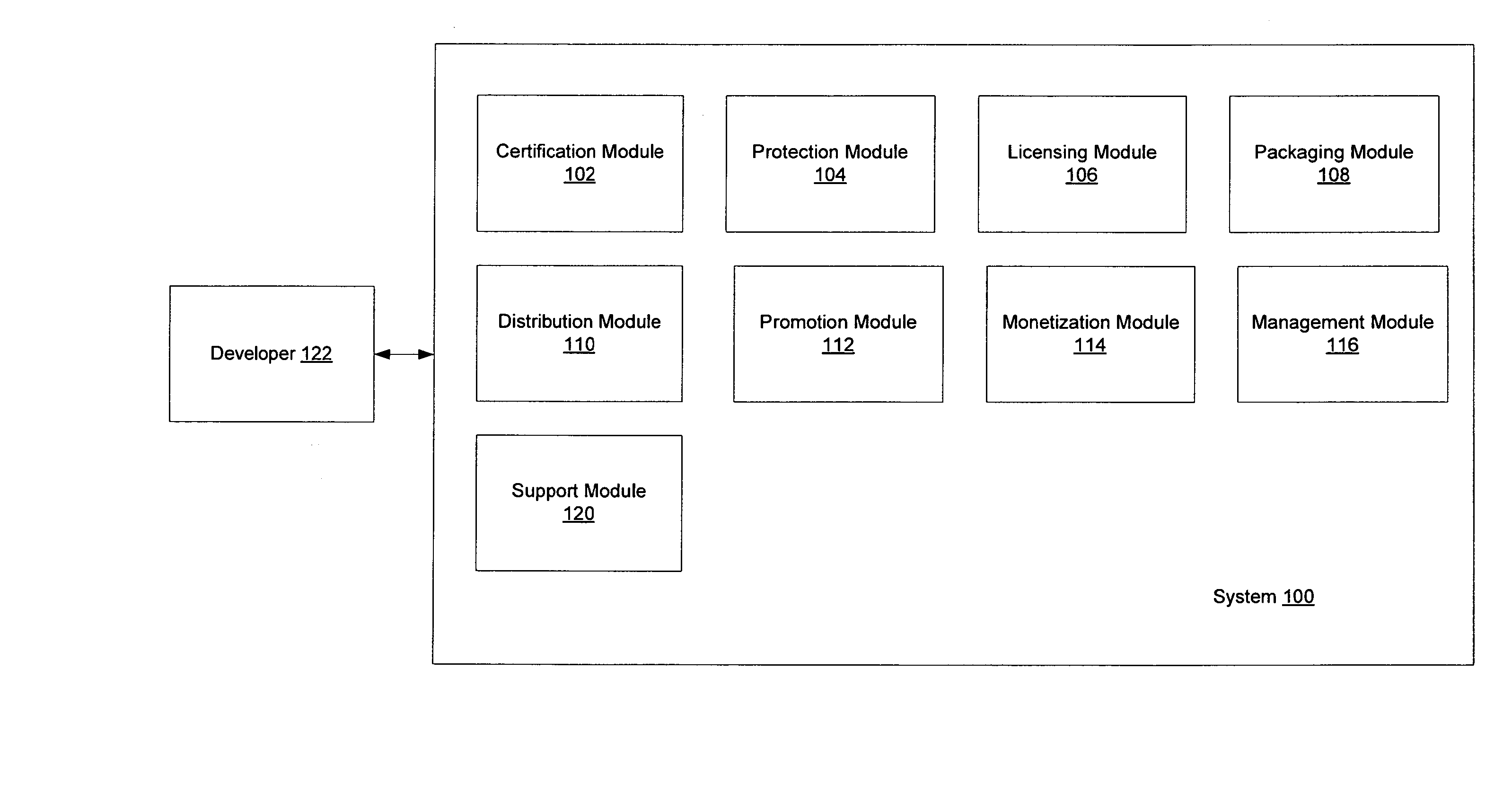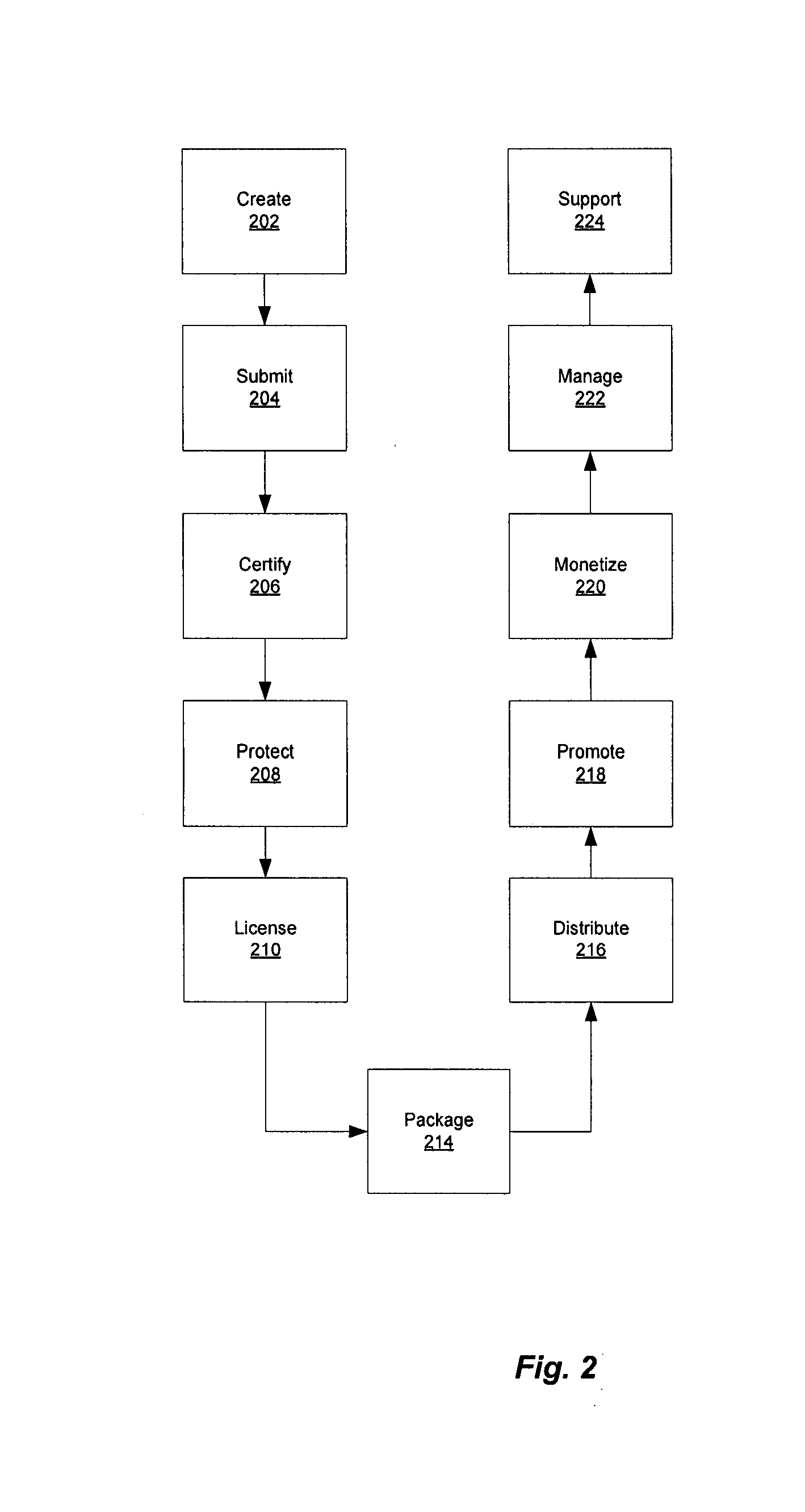Software Development and Sales Life-Cycle Services
a software development and life-cycle service technology, applied in the field of software development tools, can solve the problems of complex process for developers, service providers and consumers alike, and the collection of software code does not constitute a software solution
- Summary
- Abstract
- Description
- Claims
- Application Information
AI Technical Summary
Benefits of technology
Problems solved by technology
Method used
Image
Examples
Embodiment Construction
[0033]FIG. 1 illustrates a system 100 for providing software development and sales life-cycle services in accordance with an embodiment of the present invention. System 100 includes a certification module 102, protection module 104, licensing module 106, packaging module 108, distribution module 110, promotion module 112, monetization module 114, management module 16 and support module 120. Each of these modules is described further below. FIG. 1 also illustrates a software developer 122, who develops software and provides it to system 100 for testing and distribution as described herein.
[0034]FIG. 2 is a flow chart illustrating a method for providing software development and sales life-cycle services in accordance with an embodiment of the present invention.
[0035] Initially, a software developer 122 creates 202 a software application. The developer 122 then submits 204 the application to system 100. The developer 122 may upload the application to system 100, or in an alternative ...
PUM
 Login to View More
Login to View More Abstract
Description
Claims
Application Information
 Login to View More
Login to View More - R&D
- Intellectual Property
- Life Sciences
- Materials
- Tech Scout
- Unparalleled Data Quality
- Higher Quality Content
- 60% Fewer Hallucinations
Browse by: Latest US Patents, China's latest patents, Technical Efficacy Thesaurus, Application Domain, Technology Topic, Popular Technical Reports.
© 2025 PatSnap. All rights reserved.Legal|Privacy policy|Modern Slavery Act Transparency Statement|Sitemap|About US| Contact US: help@patsnap.com



